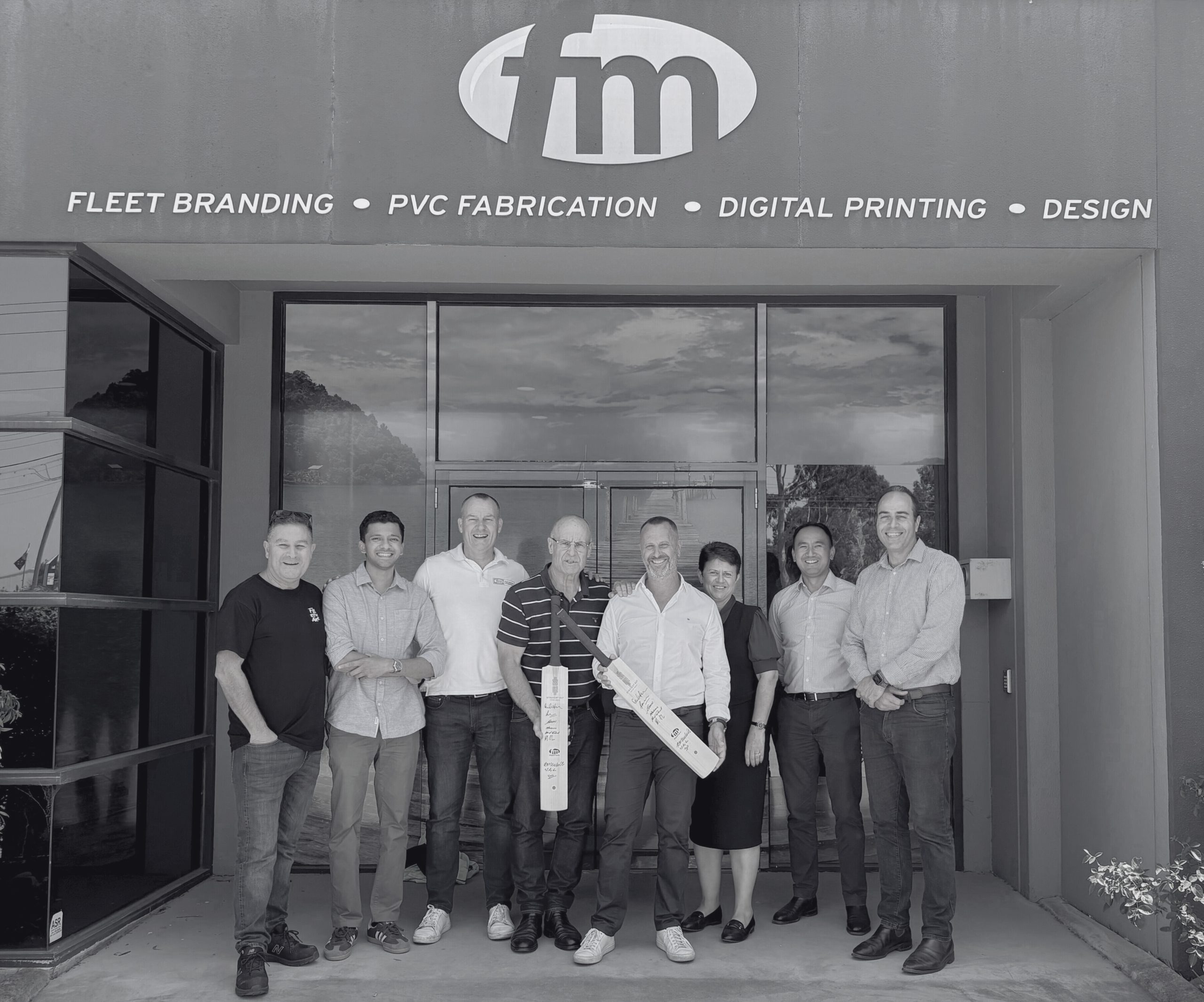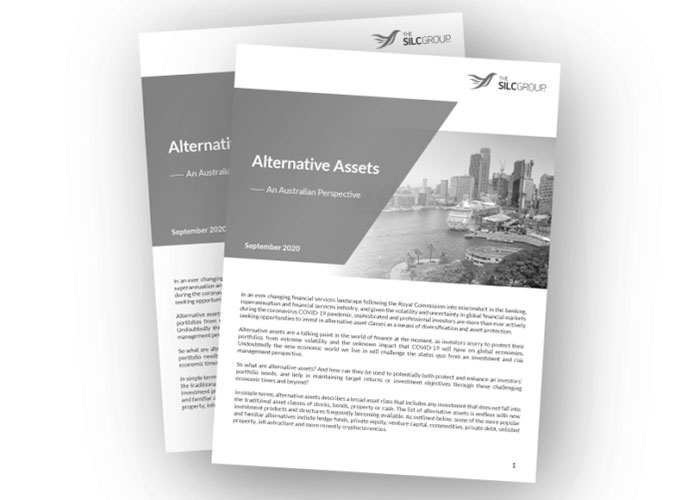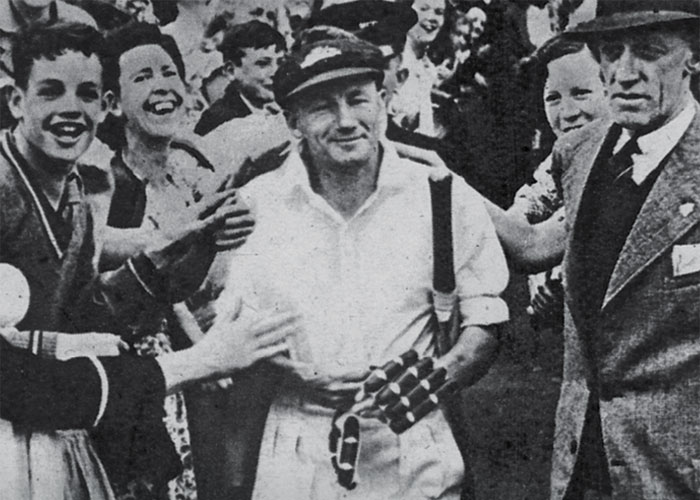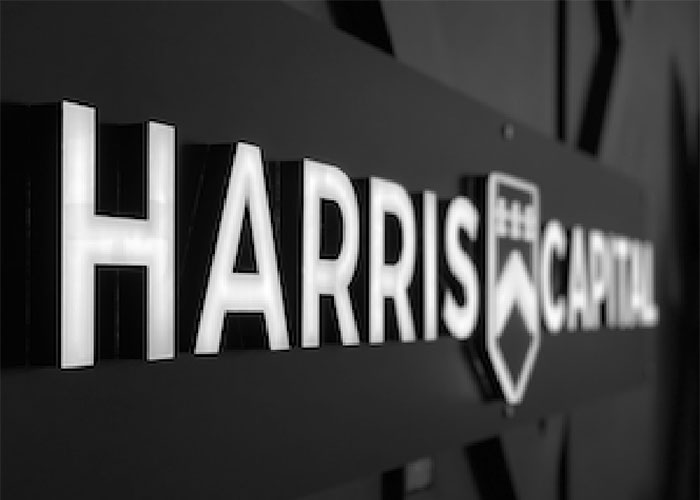
In 2004, at short notice, I left my role as company President of a venture funded technology business in California to take over my father’s business under difficult circumstances. He had been diagnosed with pancreatic cancer and had 6 months to live. In grief I thrust myself into a business I didn’t understand, in a bid to give my father the time that he had with our family and to avoid a fire sale.
I struggled in the first year to work out how to lead the organisation that my father had started 35 years earlier, established with capital obtained by selling his golf clubs and Austin Healey Sprite. I was surrounded by people who had worked in the business for 20 years or more. They had lost their long-standing leader, mentor and friend. I was young, unproven and knew little about the business.
As I tried to work out how to lead this organisation I had the good fortune to join the Entrepreneurs Organisation (EO). I learned many lessons from my Forum members, but there was one tool I was introduced to, that I use to this day, with almost every company I invest in – the 1-Page Strategic Plan.
The 1-Page Strategic Plan (1PSP) allowed me to efficiently manage a strategy conversation with the organisation, distil the best thinking, align, focus and lead the team into a new generation of growth and profitability. Together we doubled revenue and profit through the period of the GFC to 2009.
Family originated small and medium sized businesses often have quite “unique character”. Strong willed founders, who have grown the business from scratch and have the battle scars to prove it, usually have the company strategy buried in their heads.
Committed long standing employees are frequently the backbone of the business, but often there are underlying frustrations regarding processes, growth, management responsibility and opportunities for the team. The business feels like it is stuck under an invisible growth ceiling.
Experience tells me growth and profitability lie dormant in the company waiting to erupt.
The key is alignment.
By using daily huddles, weekly/monthly problem solving and quarterly planning, private businesses can align what the team is doing day-to-day and week-to-week, with a quarterly theme, annual milestones, 3-5 year targets and the critical long-term fundamentals – purpose, BHAG, brand promise and core values.
Property development company H.Co, private debt lender Mosaic and manufacturing engineering business HPS Engineering are all using these alignment tools to focus their teams on top priorities and align execution.
Alignment with a 1-Page Strategic Plan
At Straight Bat, we use the 1-Page Strategic Plan (1PSP), developed by author and founder of the Entrepreneurs Organisation – Verne Harnish. The framework and the insights I discuss in this article, are in large part developed by his formidable organisation – Gazelles.
Every successful organisation goes through cycles of change as you learn to manage communication, planning, execution and productivity.
A 1-Page Strategic Plan literally gets everyone onto the same page and allows them to understand and align what they are doing day-to-day with the long term objectives of your organisation.
Everyone knows that a 20-page business plan is obsolete the moment it is written. No one reads it and it sits on a file server!
The 1PSP is a living document that captures on one-page the entire company’s strategy.
In the short term, this captures what the team is doing day-to-day, week-to-week, with the top quarterly priorities (rocks) and a number one priority – the quarterly theme.
In the longer term, the plan captures annual milestones, 5-year targets, and the really long-term stuff – purpose (mission), vision, your BHAG, and the stuff that binds you together as a team – Core Values.
Where to begin?
With most companies, I like to focus the mind by getting clear about the founders’ long-term objectives for their company, wealth and family. I find most founders are not primarily motivated by money, rather they are motivated by the passion to build something enduring, do good works for their customers and create opportunities for their business family.
For better or worse, the moment you decide you need to take investment or sell your business, you become wedded to a second set of objectives. This means making sure you are aligned with your investors about what success looks like.
We do this by defining our 5 year targets. Sometimes 10 years is a better horizon for really substantial goals, but 5 years focuses the mind. What would success look like? What would be your gross revenue? EBIT margins? Market value of the business?
Where will your company be playing (your sandbox)? Which markets, products, geographies?
What are the 3-5 major capabilities that you will need to build to get there?
Have you done this explicitly with your co-founders and investors? Surprisingly few companies do.
What next?
Having worked out where we want to be in 5 years, next we “go long!”
Financial goals only go so far. The truth is, great organisations are motivated by things much more fundamental than money. It’s important for you to find your “north star” – Purpose, Core Values, BHAG (Big Hairy Audacious Goal)
A company’s “Purpose” is the distillation of what the company is really about. At its’ core, when your customer buys your product or service, there is really something much more fundamental that they are trying to achieve. It’s often a basic emotion or need. The objective is to get it down to one word, or at most a short phrase. To get to the root cause of a problem Toyota developed a tool called 5 Whys. It’s hard to do this well and it requires persistence, but an example is to be found here.
At Straight Bat we are “an income oriented private equity fund”. Why do we do that? Why is it important? Ask and answer that question five times and generally you get down to “too save the planet!” Back up one level and you will find your purpose – “the work you strive to do that is never done”. At Straight Bat our purpose is “Prosperity and Legacy”. We are in the business of helping our portfolio company owners and our investors create sustainable “prosperity” and leave an enduring “legacy”. Our portfolio company owners have built mature, robust, highly profitable businesses, quietly delivering the products and services that underpin our Australian prosperity. These companies, their work and reputation are their legacy.
For our investors they are taking their own legacy and investing to provide enduring prosperity for their families and their descendants.
Having distilled your Purpose, next we look for a BHAG (Big Hairy Audacious Goal) a concept developed by author Jim Collins. There are lots of resources available online to help you better understand the concept, but the objective is to find a measurable goal that really raises your sights. If done well, it might result in a sharp intake of breath and the response “wow, if we really achieved that, that would be mind blowing!” The classic BHAG was Microsoft’s “a PC on every desk” (which for a time they basically achieved!). At Straight Bat, our Big Hairy Audacious Goal is to be “Australia’s Berkshire Hathaway!”
Powerful also is Brand Promise – what are the three fundamental reasons why your customers would choose you over your competitors? We then look for three Brand KPIs that measure how effective we are at delivering on those promises. Southwest Airlines is a great case study for a focused brand promise.
Finally we distil our Core Values. Before you roll your eyes, what we mean by Core Values in this context is definitely NOT the “motherhood and apple pie” that masquerades as core values at your average big corporate – honesty, integrity and team work. Within the context of the 1PSP, what we are looking for is truth about the real values that define the organisation. Objectively, they can be “good” or even “bad”. Often we look to the founder for core values. What was their original motivation for starting a business. Secondly we look to high performers in the team – who are those individuals that you wish you could clone? Often a core value lies in their conduct.
At Straight Bat our core values are “all in it together”, “have a crack”, “Straight Bat” and “Balance 168”. These values have specific meaning to us, they guide us in our day-to-day conduct, we hire people cut from the same cloth and we expect to be held accountable to these values.
Bringing it back to the here and now
Having articulated the long-term vision for the business, it is time to start bringing it back to the present.
I often find myself using the analogy that your company vision (purpose, BHAG, Brand Promise and Core Values) is like deciding “which mountain the company is going to climb”. The quarterly and annual milestones are the plan to ascend the summit via “basecamp two and basecamp five”.
So next we determine where the company needs to be in 12 months time? For example, what new products or customers do we need to achieve our 12 month sales targets?
We could define this in terms of revenue, margins, unit sales, average prices, and profitability. We underpin this with 3-5 key initiatives or milestones and 1-2 critical numbers for the team to monitor – ideally one that is people or balance sheet related and a second that is process or P&L related.
Having determined where we need to be in 12 months, we then bring the focus back to the next quarter, more or less looking for a similar set of metrics to deliver in the next 90 days.
Here we focus on the top 3-5 priorities or “rocks”. The term is borrowed from a fable about the most important things in life. If you are to fill a bucket with rocks, pebbles and sand, don’t put the sand in first as there will be no room left for the pebbles and rocks. Of the dozens of things that the company needs to do every quarter, the “rocks” are identified as the most important. A company’s rocks might include “launch a new product”, the pebbles are “make payroll” and the sand is “respond to my email messages”. The analogy is used to focus the mind and carve out time to work “on the business” rather than just “in the business”.
Next we focus the team with a quarterly theme. Ideally this has everyone in the company focus on the most important (number one) of the top five priorities. When this process works really well companies will identify a theme that is humorous, a bit irreverent and fun. A good theme will stretch and galvanise the team, it has measurable results and a scoreboard. While there is often a core team, everyone in the company should contribute to the process. If the results are delivered the team enjoys a group celebration and a personal reward!
Finally, everyone in the company defines their own individual objectives and key results that underpin the company’s quarterly theme and quarterly rocks. At Straight Bat we use Google’s OKRs – objectives and key results.
Maintaining Alignment
The process described above is conducted during a 1-2 day (!!) offsite. The whole team contributes to building the plan. This not only creates buy-in and team alignment, but often generates insights that senior management had not considered.
The key to using a 1PSP is to recognise that it is a process (run quarterly) and not a static output that is conducted once and remains unchanging.
Each quarter the team comes together and rebuilds the plan from the ground up. In between we take the plan out to the market and test it. Sun Tzu says “no strategy survives first encounter with the enemy” and the same is true for strategic planning. Each quarter the team brings back learning and insight that helps refine the plan. Next quarter we may still be climbing the same mountain but this time we will “bypass basecamp two and go straight to basecamp three”.
Between quarterly planning sessions, alignment is maintained with Meeting Rhythm. The best teams huddle daily (no more than 15 minutes stand-up), problem solve weekly, assemble the brains trust to work on strategy monthly and plan quarterly.
Summary
All together, this is a simple reliable process to execute well by maintaining alignment and using a 1-page Strategic Plan (1PSP) – huddle daily, meet weekly/monthly to problem solve and plan quarterly. In your planning align what the team is doing (Objectives and Key Results) day-to-day and week-to-week, with a quarterly theme, annual milestones, 5 year targets and the critical long-term fundamentals – purpose, BHAG, brand promise and core values. Job done.
Play the long game. SCG
















